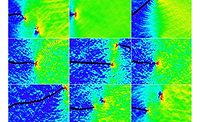BUFFALO GROVE, IL – Introducing a new chemistry into the market can be an inherently long process, and one beset with challenges, especially in assessing risks associated with chemical exposure, which can take years and cost millions of dollars. This, together with increasing pressure from consumer and advocacy groups on reducing or eliminating traditional animal testing, can make investment in new chemistries unappealing to business leaders and investors, despite the potential for opening doors to new growth opportunities.
ANGUS Chemical Co., a leading global manufacturer and marketer of specialty and fine chemicals, is turning to big data and the use of UL’s Cheminformatics suite, which includes REACHAcross™, a predictive toxicology tool from UL’s Product Supply Chain Intelligence division (PSI), to enhance its ability to evaluate safety early in the product development process. REACHAcross provides a digital alternative to animal testing, and combines the best of quantitative structure–activity relationship (QSAR) and read-across approaches to predict the chemical toxicity of substances to comply with global chemical regulations and new chemical development.
“UL’s suite of cheminformatics products is complementary to other computational tools in the market, and gives us another lens to look through in performing risk assessments with our chemistries, getting us one step closer to complete 360-degree, more sustainable, animal-free safety evaluations,” said Dr. Pam Spencer, Senior Director, Regulatory, Product Stewardship and Quality at ANGUS. “Because it draws from an extraordinarily large data set, REACHAcross provides immediate access to a very complete set of in vivo test data used in a weight of evidence approach, which strengthens our ability to assess gaps in safety information and how to target next steps.”
UL’s Cheminformatics suite was initially launched in March 2017 with REACHAcross and now includes both the Green Chemistry and R-SDS modules. REACHAcross is specifically designed to help companies meet the European Union’s 2018 REACH registration deadlines by reducing the need for animal testing, which is time-intensive, costly and can pose ethical dilemmas. The tool works by analyzing billions of pairs of chemicals and blends conventional read-across principles with machine learning approaches for a scalable and generally-applicable model of health endpoints, such as skin sensitization, acute oral toxicity, acute eye irritation, acute dermal irritation, acute dermal toxicity and mutagenicity. ANGUS partnered with UL as a beta-client of the tool during the development process.
“The initial intent with our REACHAcross tool was to help companies fill data gaps in REACH dossiers,” said Carlos Correia, Vice President, UL’s PSI division. “However, in working closely with ANGUS throughout the software development process, we recognized the broader industry value of UL’s Cheminformatics tools for use in providing insight into how chemicals behave at early stages in R&D development, as well as in prioritizing work in modernizing data sets. As a willing partner through the process, ANGUS provided us with valuable insight we used to enhance the tool to better serve their needs, which are shared by others across the global chemical industry.”
“For years, we’ve monitored how data and analytics can make chemical development more efficient,” added Spencer. “The same can be applied to regulatory where category formation, grouping of chemicals and read-across methods are broadly applicable in toxicological assessments. With UL’s Cheminformatics suite and tools like REACHAcross, even a small company like ANGUS can build a robust program around chemical safety assessment and regulatory decisions, while reducing the time, resource and financial investment required to bring a new product to market.”
To learn more about UL’s Cheminformatics suite, visit psi.ul.com or www.ulreachacross.com.









